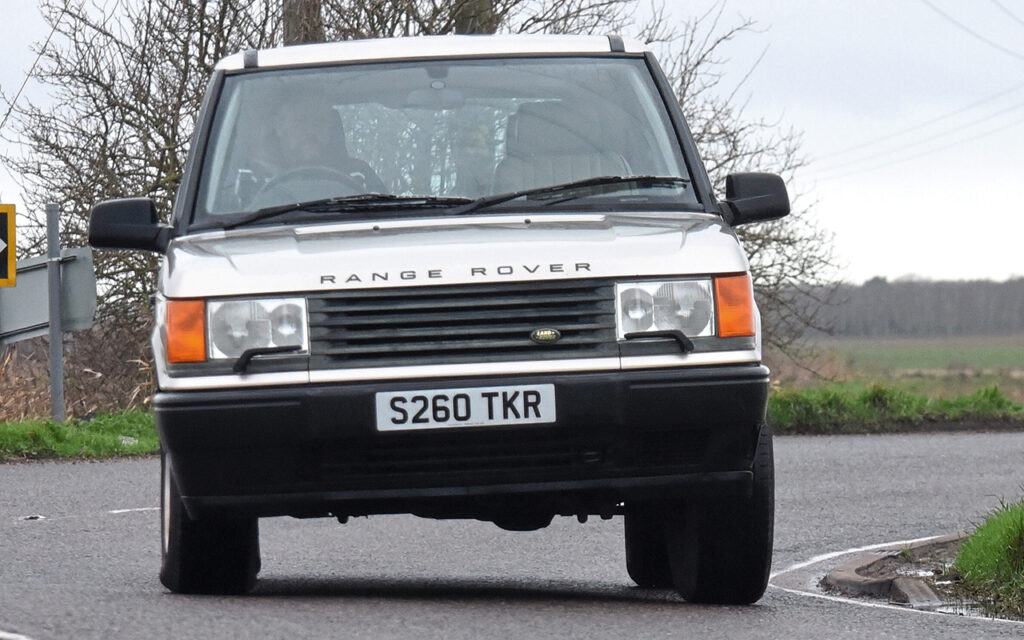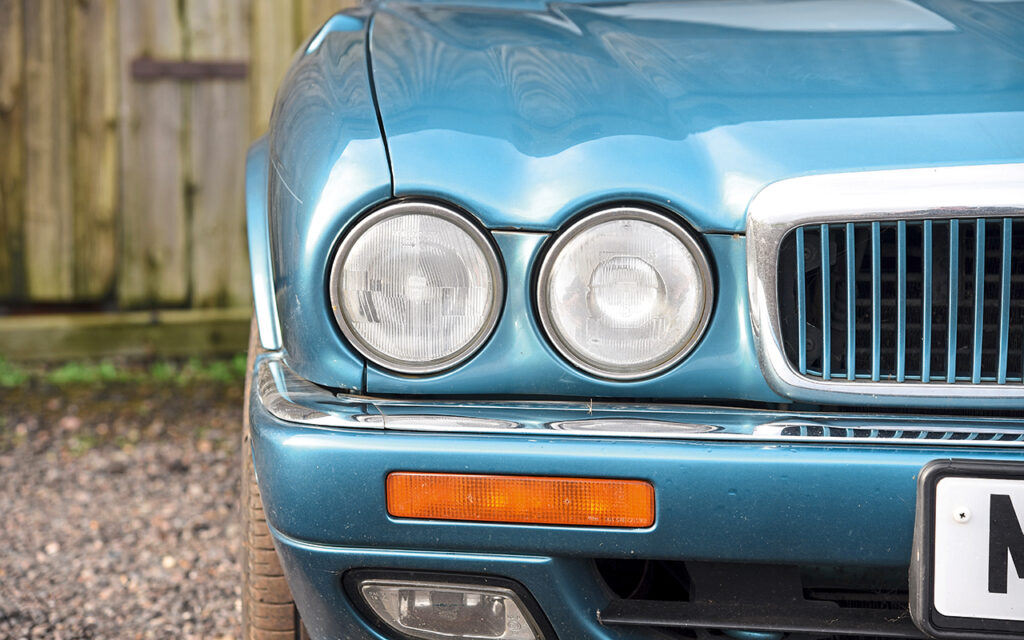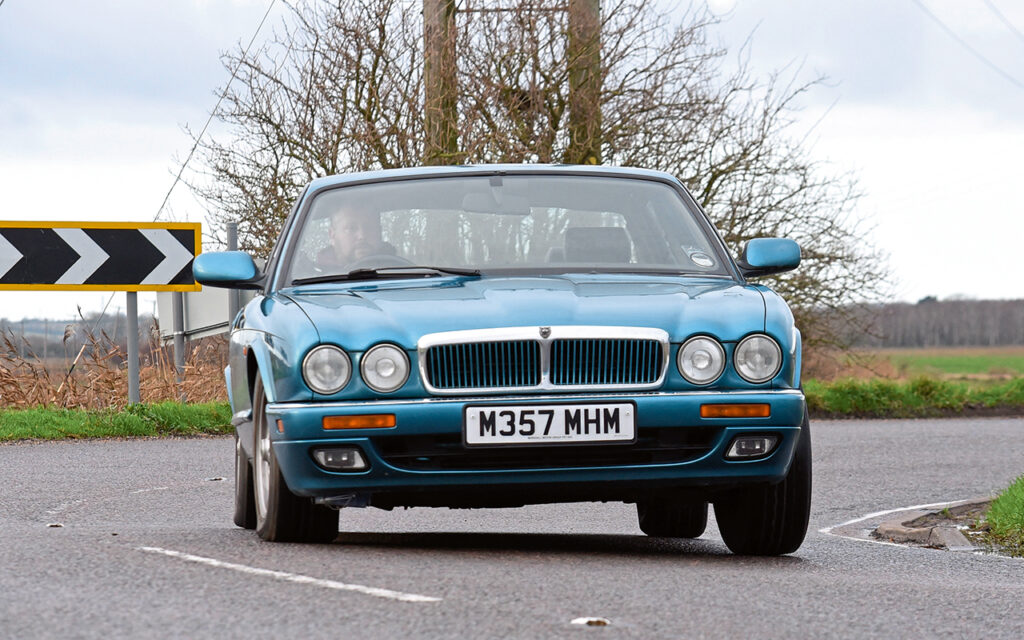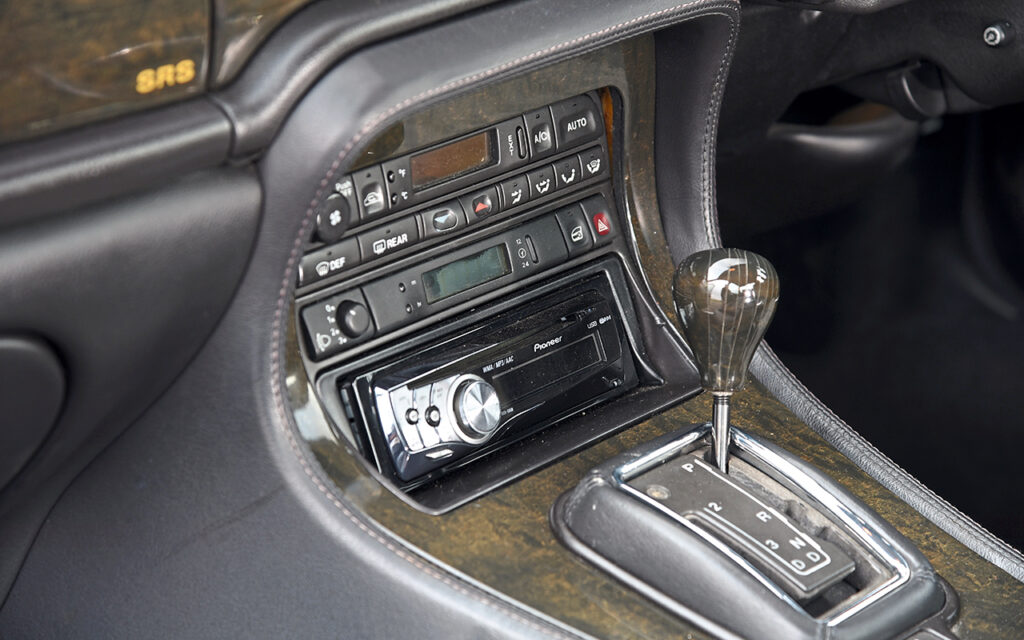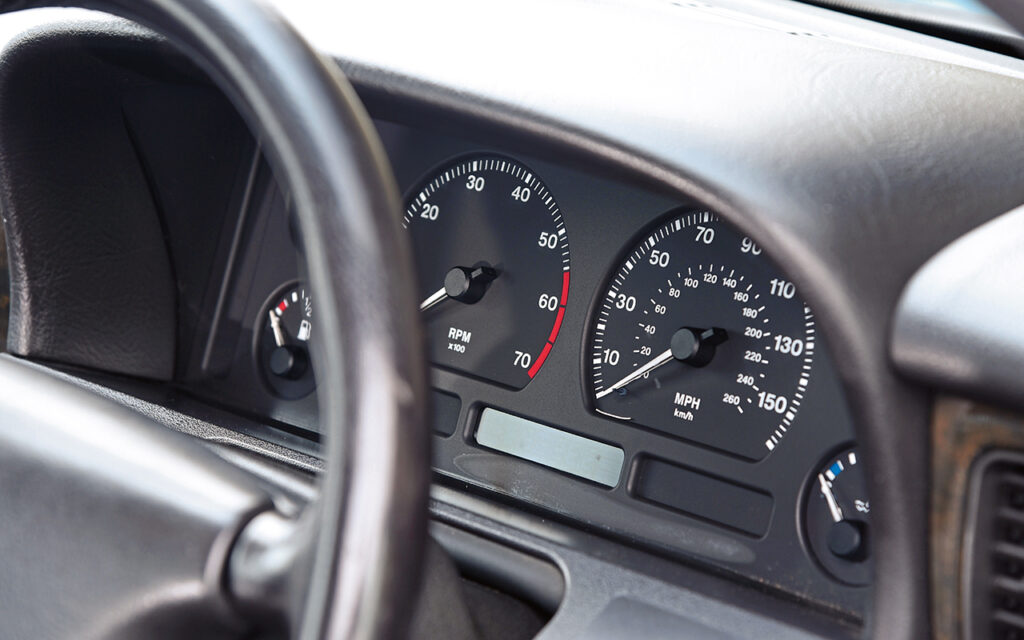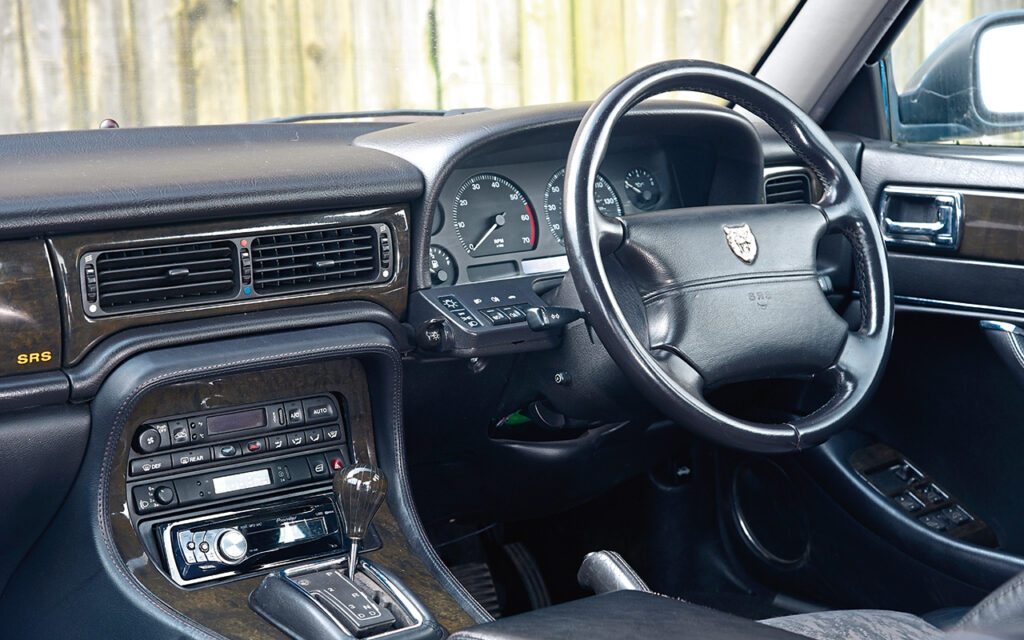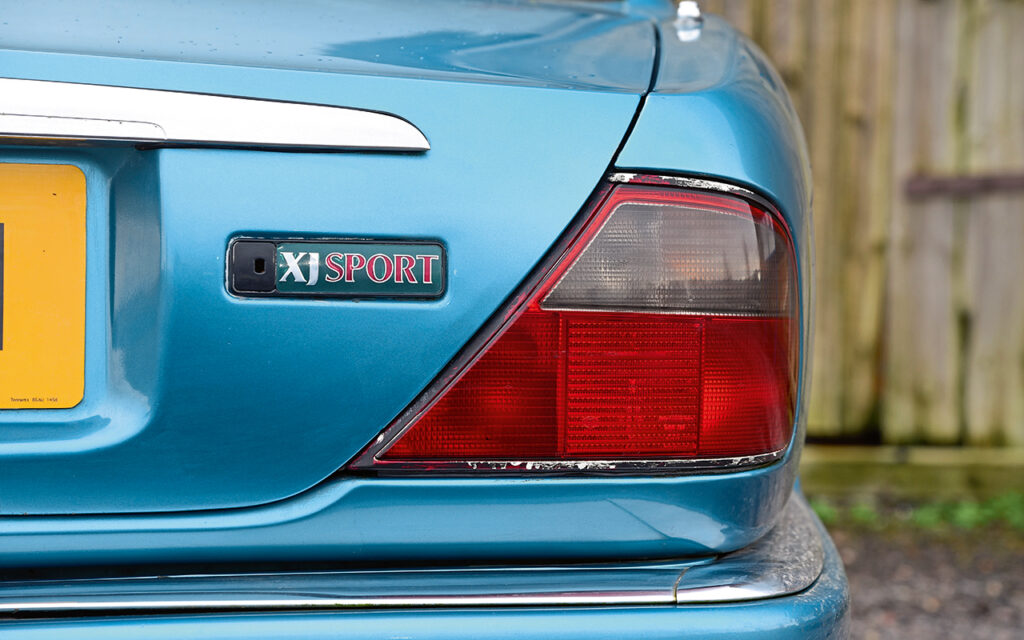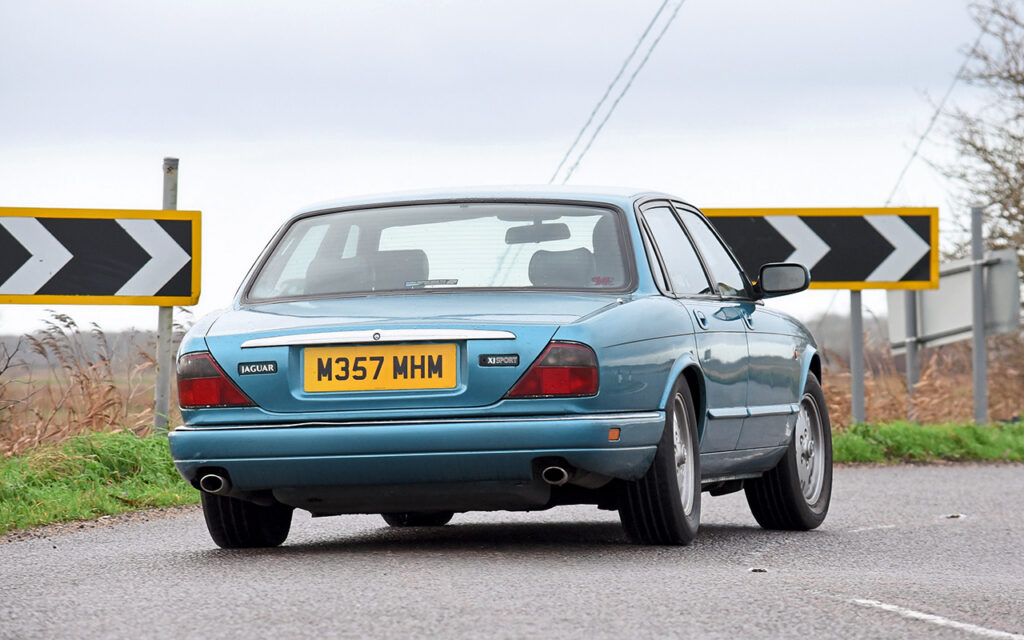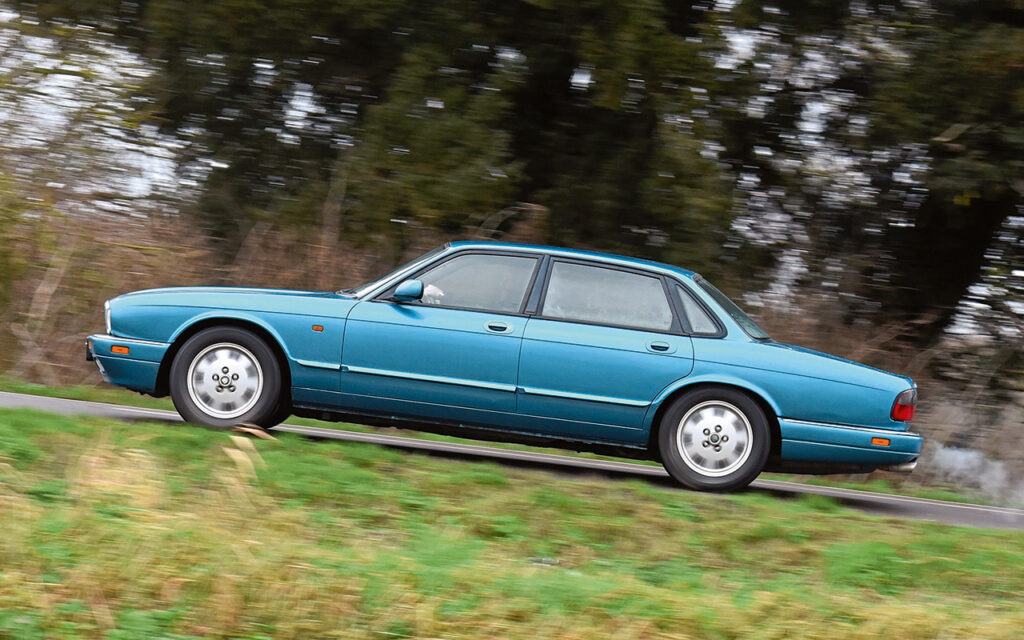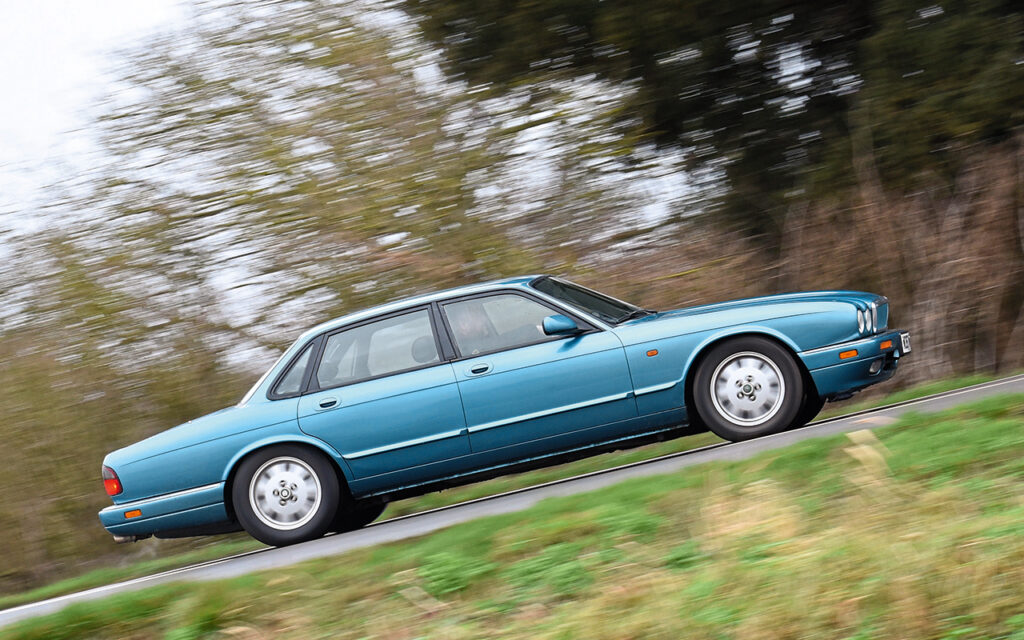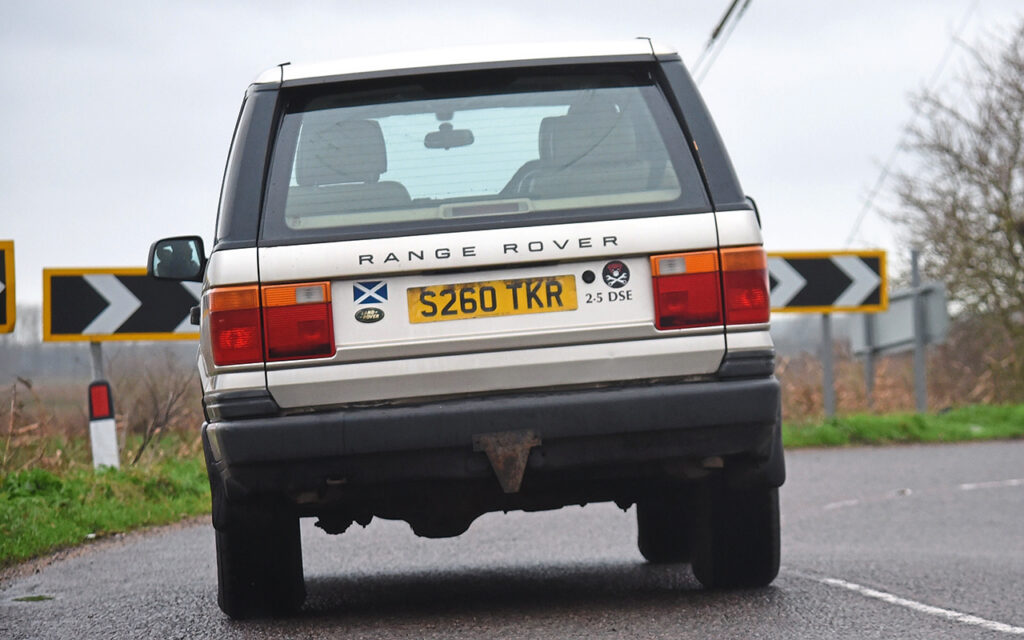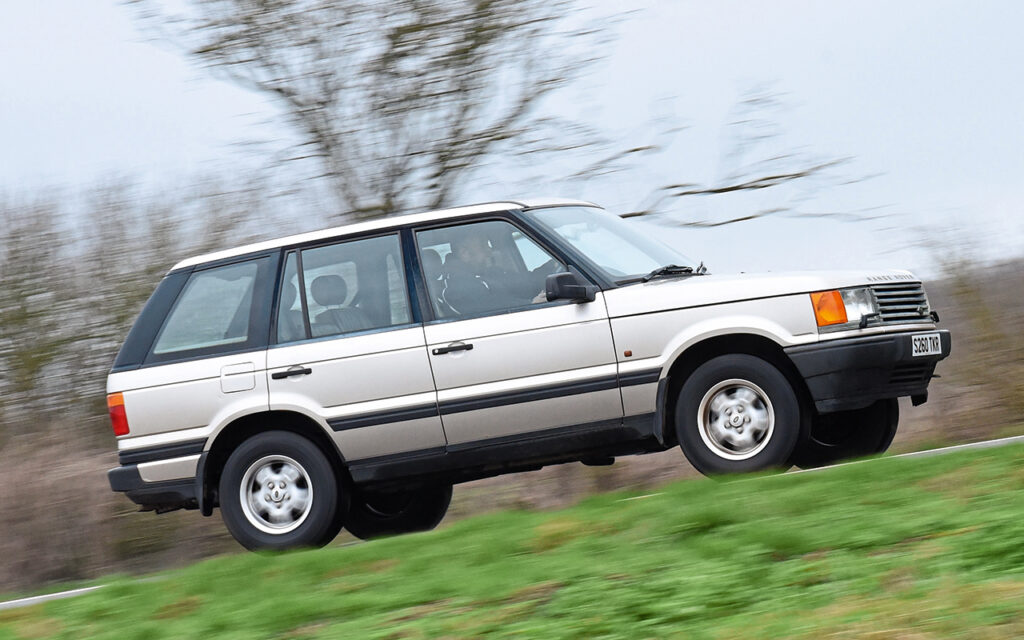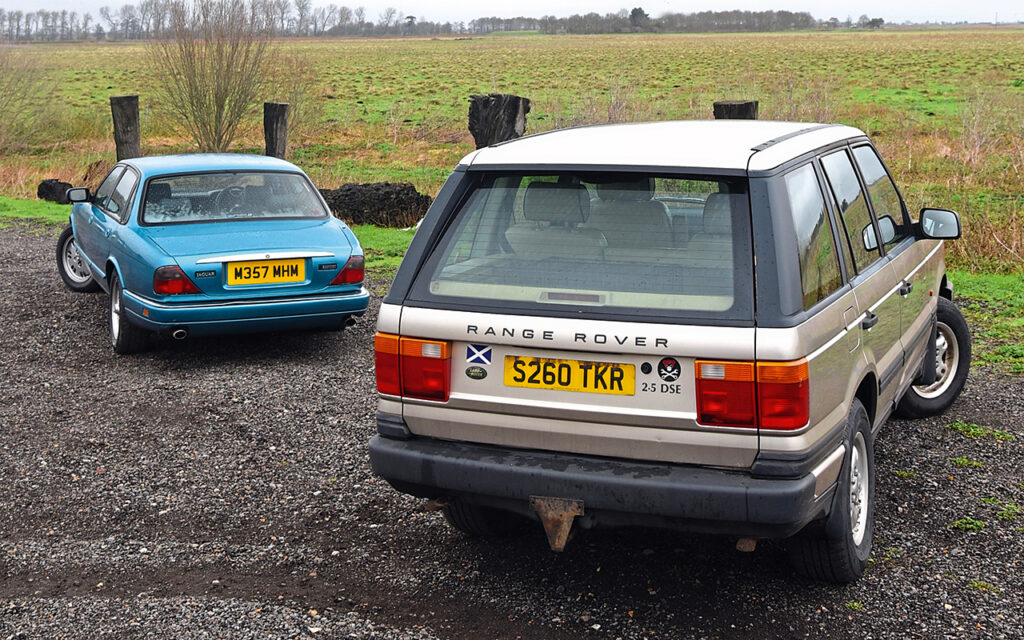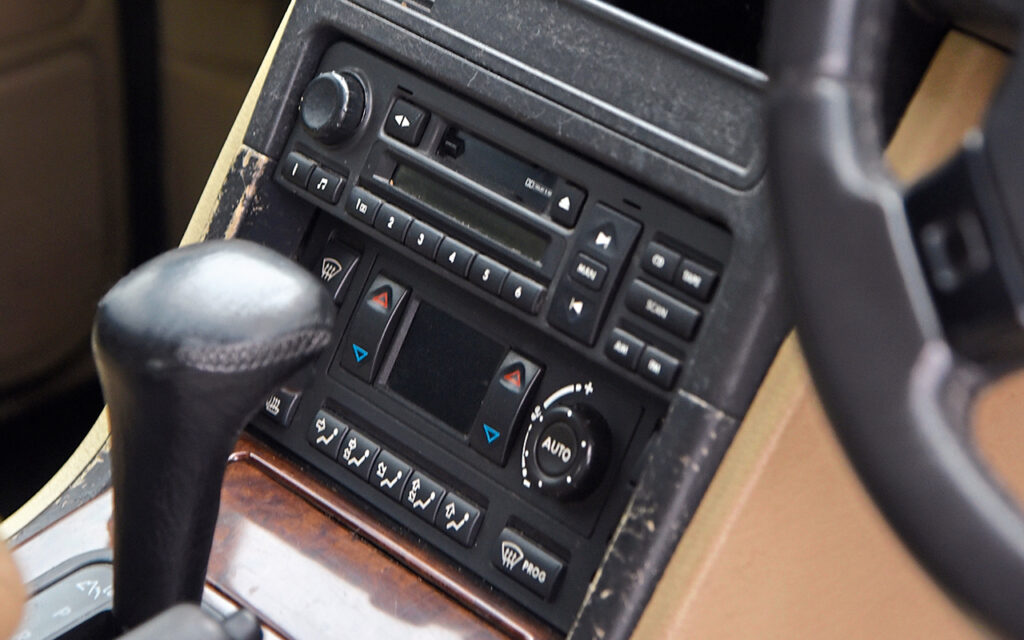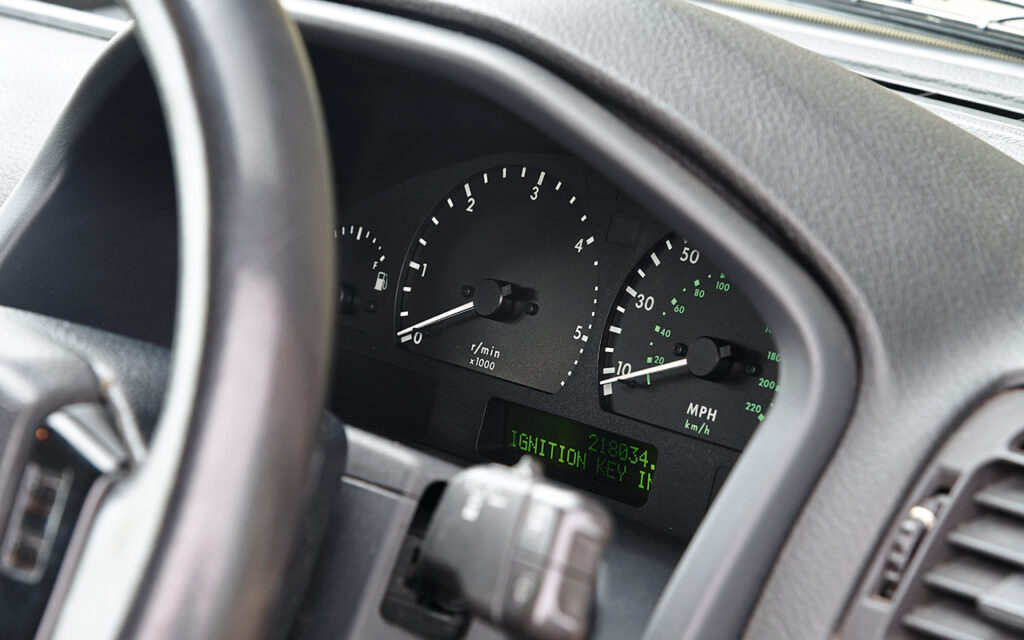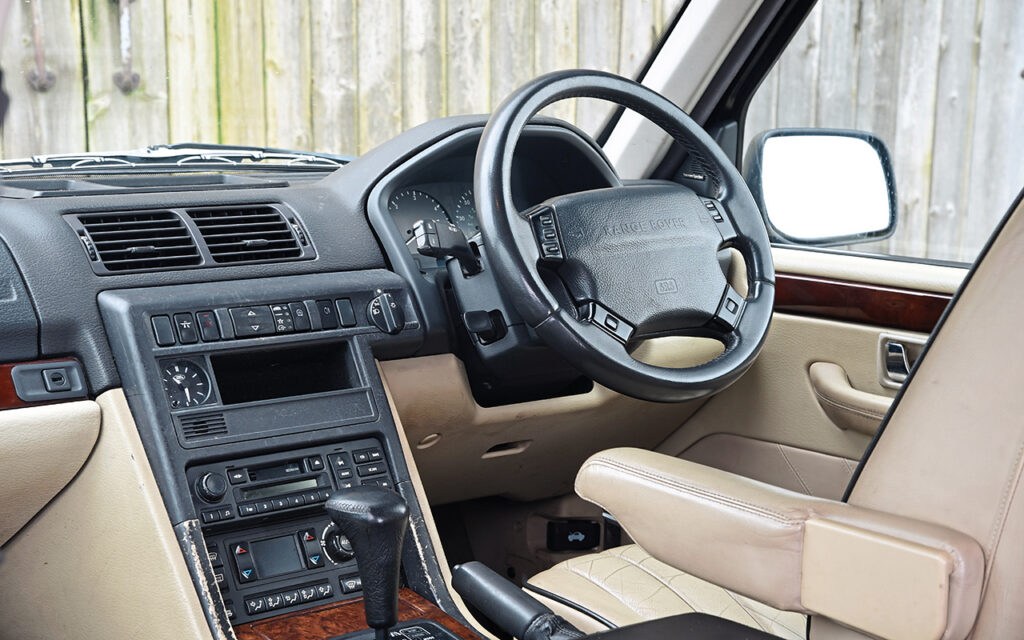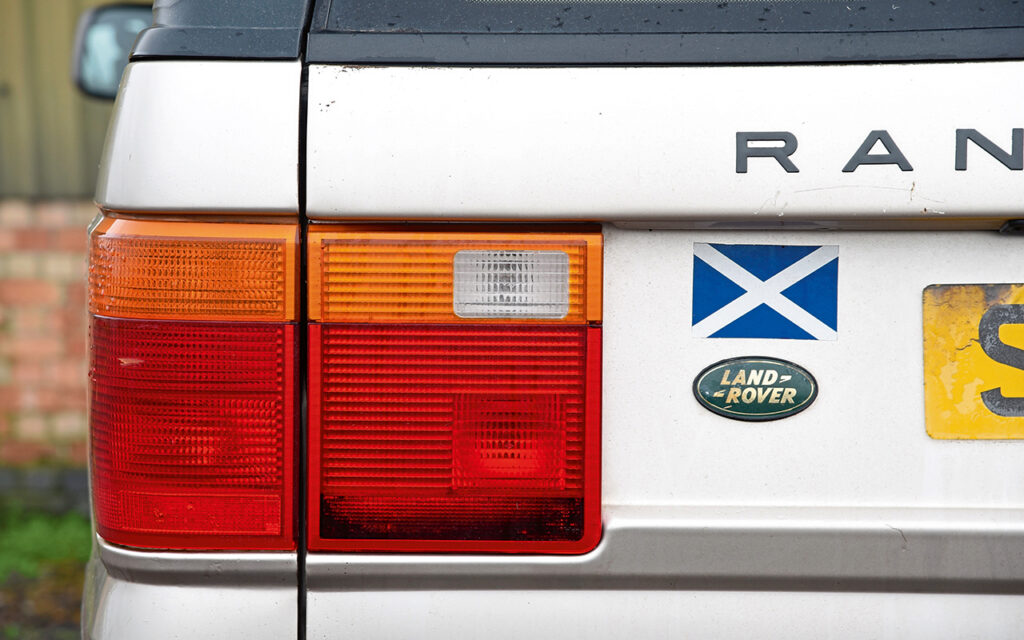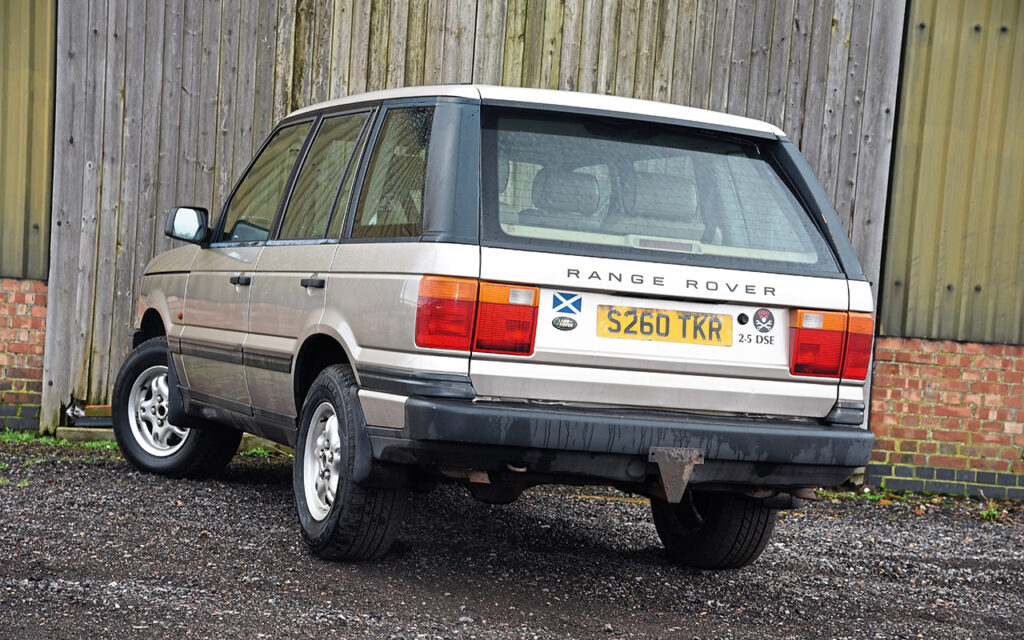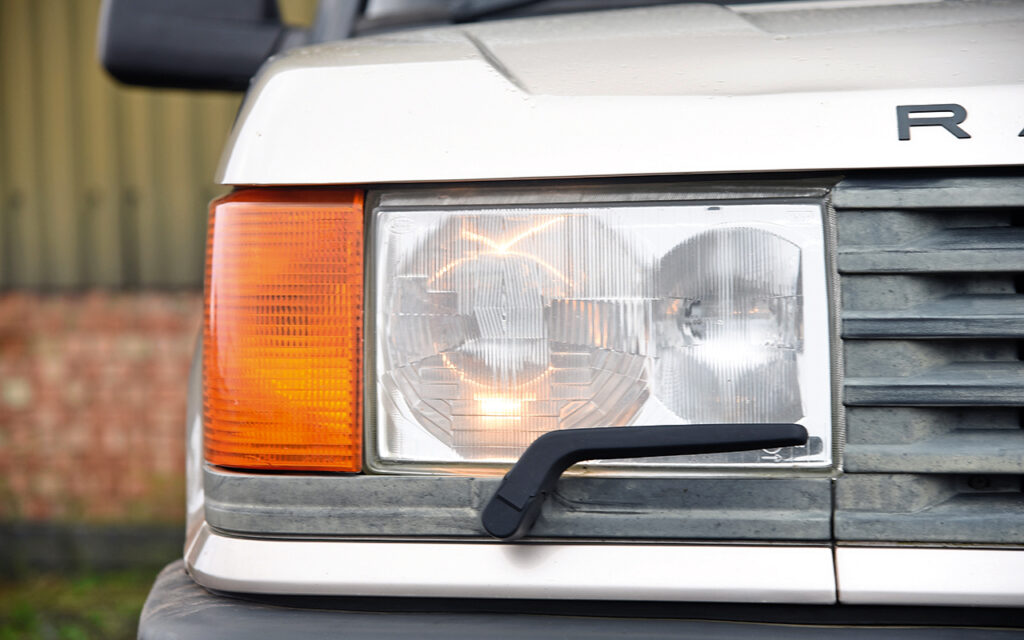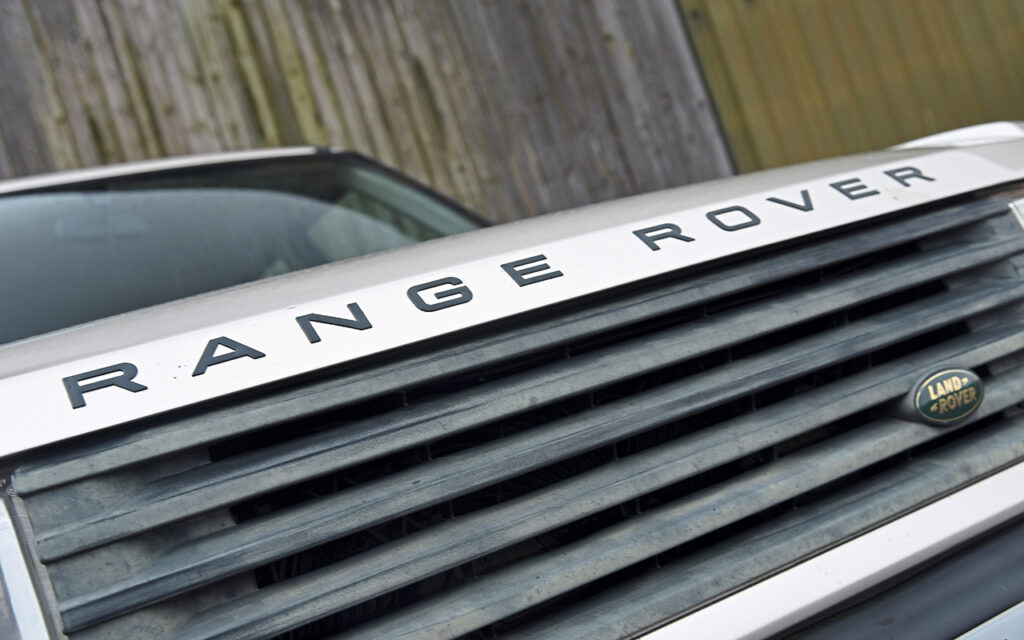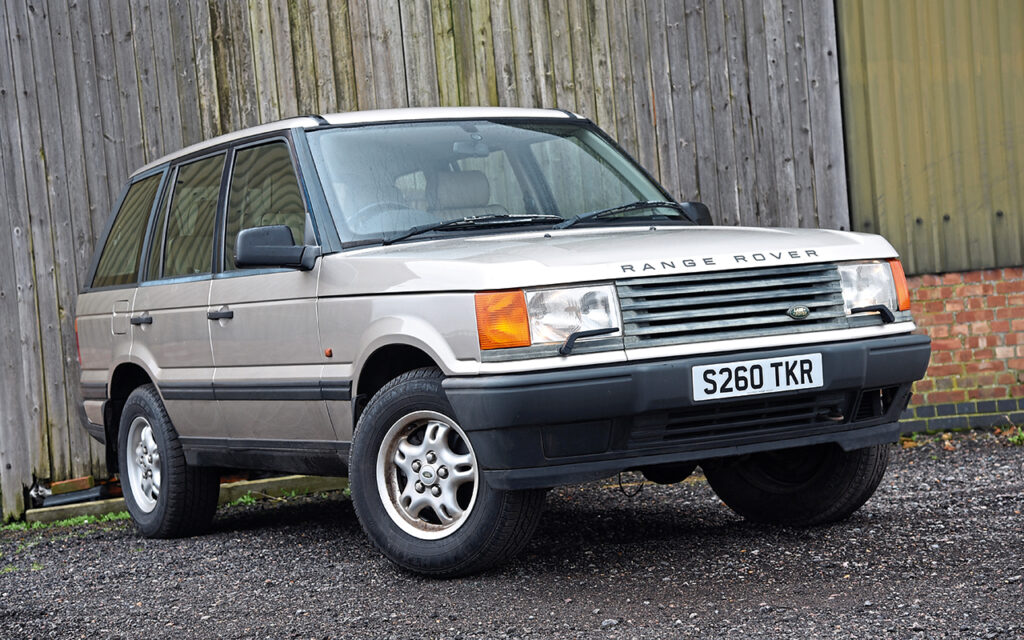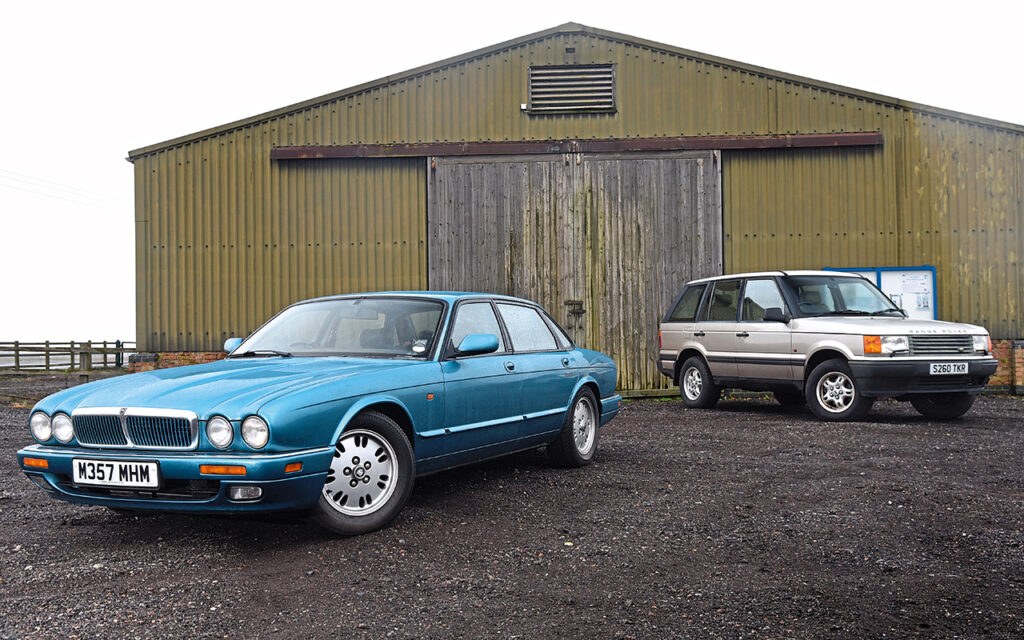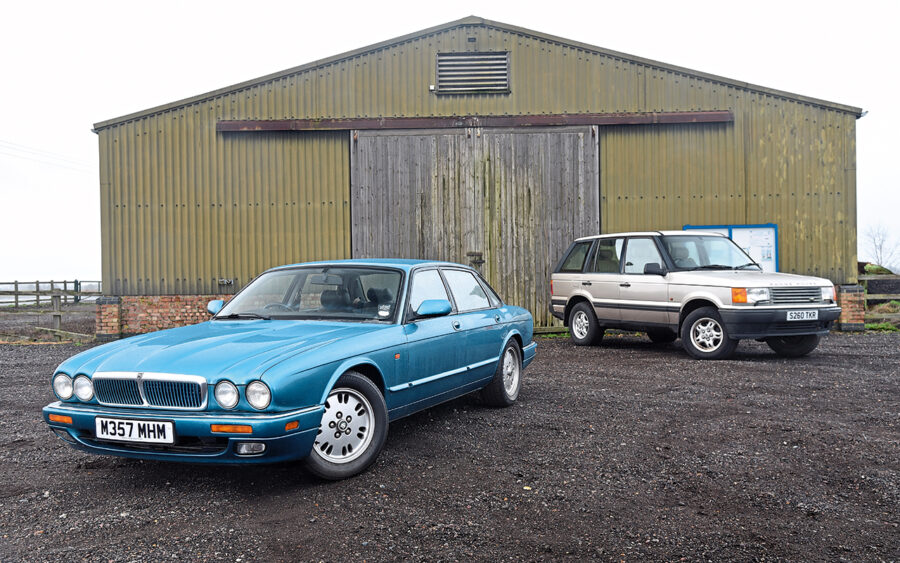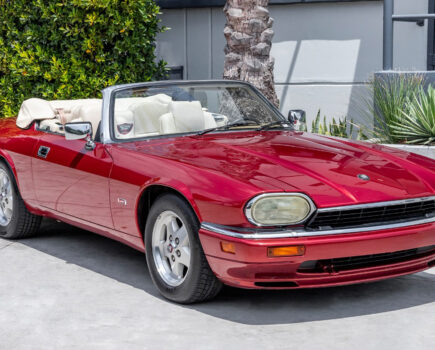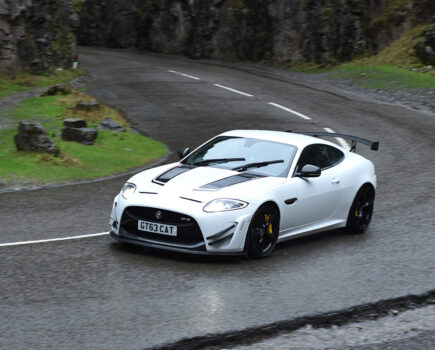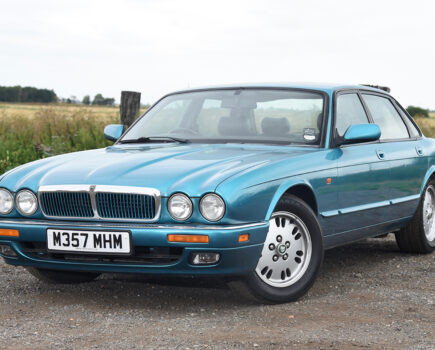When the Jaguar XJ6 X300 and Range Rover P38A arrived in 1994, both were competitors in the executive car market. But which is the better choice today?
Britain in 1994 was in an interesting place. Having emerged from three years of recession, the economy was starting to make a comeback and, while the yuppie excesses of the mid-to-late 1980s were a thing of the past, the market for luxury goods was undergoing a renaissance.
Chief among them were two new cars that had more in common than either manufacturer would care to admit, and that were seen as the vehicles of choice for those with cash to spare – unlike the companies that built them. They were both developed on a tight budget using existing parts as much as possible, yet they were beautifully executed.
The X300 XJ6 and the P38A Range Rover (to give them their internal product names, by which both have become better known in recent years), were seen as critical cars for their manufacturers, both replacing iconic vehicles past their first flush of youth on which entire brands had been built.
Less well-advertised, though, was that each of the pair wasn’t a wholly new vehicle. Far from it, in fact, with the X300 relying on the chassis and main body components of the outgoing XJ40 saloon, while the P38A was built on the exact same chassis as the Range Rover Classic – a vehicle that had changed in image, but not in architecture, over a 24-year period.
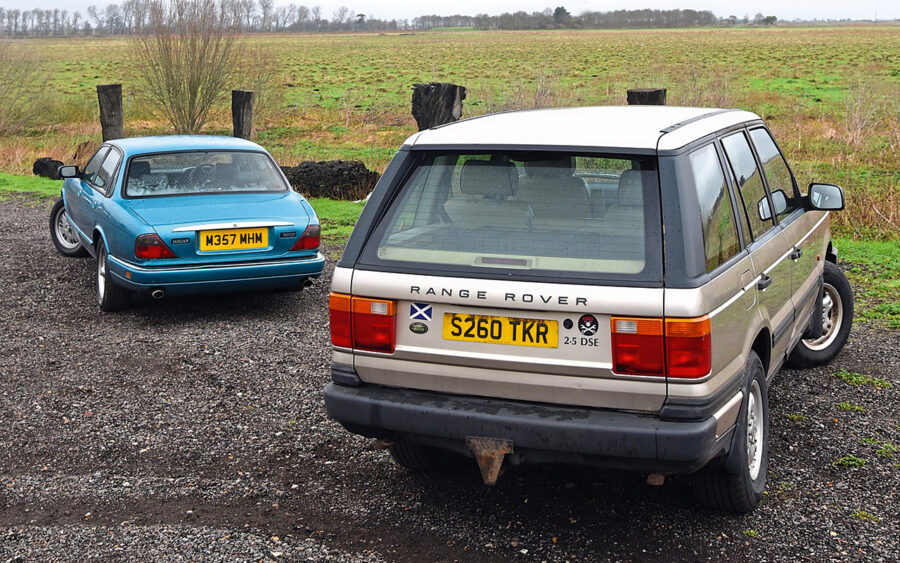
Each of these high-tech new cars concealed aged technology, but both managed to pull it off brilliantly, kickstarting an eight-year battle at the top of the luxury car sales charts. It was a fight that ended with both of them on the same side when Jaguar’s parent company, Ford, bought Land Rover from the struggling Rover Group in 2000 to bring the brands under its Premier Auto Group, and a move that ultimately led to Tata buying both Jaguar and Land Rover in 2008 to form today’s alliance.
Perhaps more pertinent, though, was the pairing of the XJ6 and the Range Rover in a twin-test environment, where a traditional luxury saloon and a posh SUV were brought together for the first time as genuine rivals by a few of the contemporary car magazines. It was a recognition that the car market was evolving from traditional sectors to more diverse and less traditional ones, and the reason why Jaguar now builds three crossovers, or sports utility vehicles (SUVs).
Back then, though, the idea of vehicles crossing traditional market boundaries was still alien to most – indeed, it was the P38A Range Rover that probably kick-started the phenomenon despite using some pretty ancient technology under a modern façade.
First of all, there was the chassis. It was no different to that of the original Range Rover of 1970, with coil springs and a 100in wheelbase, although on all but the most basic examples the car used active air suspension to reduce body roll and disguise its age.
Then, there were the engines. With the exception of the 2.5-litre diesel, which was a BMW-sourced unit brought in during the German company’s tenure of Rover Group, the Range Rover power units were overhead-valve engines based on the iconic, and aged, Rover V8 – an all-alloy unit originally developed by General Motors, but acquired by Rover back in 1965, almost 30 years before the P38A made its debut.
Yet the lightweight V8 was ahead of its time when new, and, although it was thirsty, it was also a tractable unit with decent performance and a beguiling soundtrack – certainly not something that would count against Range Rover’s desirability.
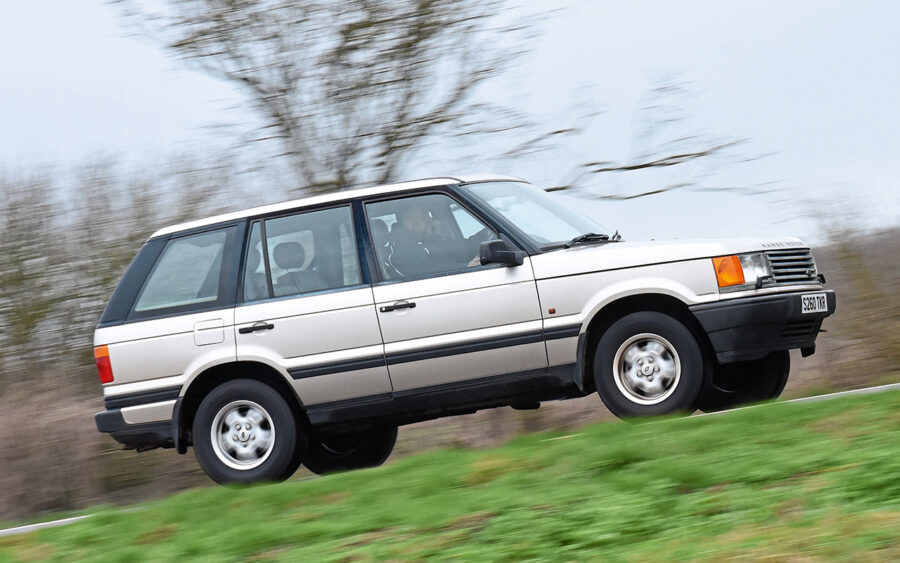
The XJ, meanwhile, received new and more efficient engines that were an evolution of the XJ40’s AJ6 powerplants, yet sufficiently revised to be distinctive. These new AJ16 units were coil-on-plug engines with distributorless ignition, and were more efficient than the outgoing units, with around 30mpg possible from the entry-level 240bhp 3.2-litre. A 4.0-litre unit was also offered, as well as a scorching supercharged variant in the XJR. However, Jaguar had originally wanted the X300 to feature a new range of V8 engines, but the reality was that it couldn’t develop the new powerplants in time, which is why the X300 was sold for two years before the new AJV8s were ready.
A quarter of a century on, the juxtaposition of the two cars parked here highlights their obvious differences. In isolation, the SUV’s lines hide its overall bulk, but alongside the Jaguar it suddenly looks huge – and while the Range Rover looks modern and imposing (for its era, at least), with styling that gives it a presence that’s neither too bold nor too outlandish, the XJ’s roof is around the same level as its door handles.
In part, the difference is so stark because, in a market where cars were generally getting taller, Jaguar used the central body structure, roof and glass from the XJ40 (albeit with new panels all around to give the car a softer, rounder look that echoed the silhouette and four-headlamp nose of the original XJ saloons). That meant it sat lower than most cars on the road – something that worked wonders for the delicacy of its styling and its aerodynamics, but not for its overall packaging. But, compared to the P38A, the XJ was certainly the more subtle and upmarket offering, with a smart, high-quality look.
At the time, some commentators criticised the XJ for being a bit old-fashioned compared to the likes of the Range Rover. Yet, whereas the Range Rover today looks blocky and dated, the Jaguar’s styling has transcended generations in a far more organic way – it still looks as pretty and as delicate as it always did, with a profile that’s unlike anything else on the road.
The Range Rover does have the more practical cabin, of course, with a vast amount of space for those in the front to stretch out and relax on sumptuous leather seats. The well laid out dash features a digital odometer alongside analogue dials, while much of the switchgear is shared with the Rover 800. It’s a pleasant cabin in which to sit, with a commanding view of the road ahead.
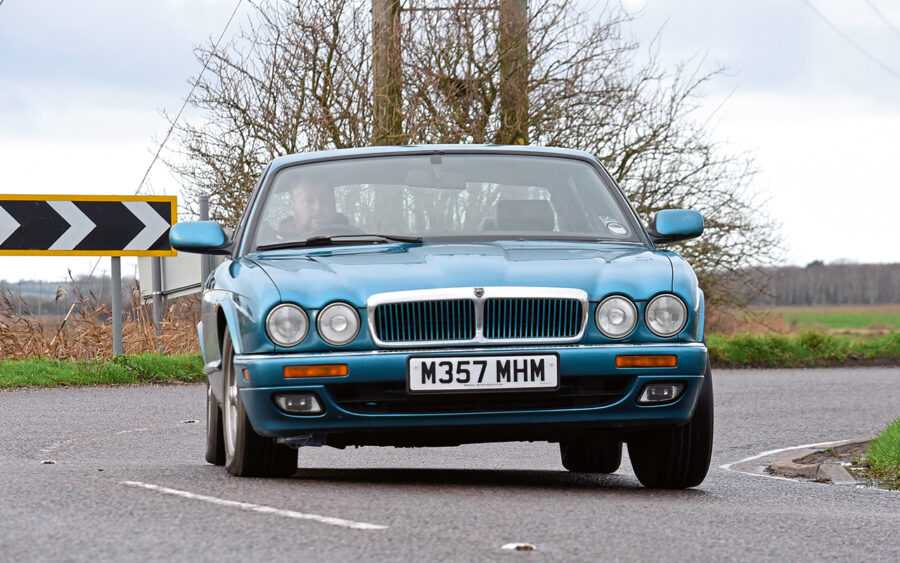
Those in the rear are less well catered for, the limitations of the original Range Rover chassis and wheelbase offering limited leg room and less access through the back doors. The trade-off is a huge luggage area, something XJ owners can only dream about.
Indeed, packaging is the XJ’s biggest bugbear. For such a large car, the cabin space is embarrassingly small, especially in terms of rear legroom, while the low-slung body means that it’s also extremely shallow and is compromised as a result, despite the boot being quite long. Still, that’s the price you pay for such timelessly elegant styling.
The two cars are vastly different out on the road where the Jaguar is, naturally, far more engaging to drive. Like every XJ saloon before and since, the X300 has a poise and grace that makes it an absolute pleasure to drive. Whether that’s threading through heavy urban traffic, high-speed motorway cruising or driving quickly along a twisty road, it’s never less than supremely comfortable, while the steering, ride and handling are fantastic whatever the situation. Our test car here is a 3.2 Sport and has a slightly firmer ride than the more luxury-oriented Sovereign models, but without detriment to ride comfort.
By contrast, the P38A is harder work to drive; it feels less eager. This example, a 2.5 DSE, is the most leisurely of the bunch, but even the V8s are slower than the Jaguar straight-six, while their road manners are much more about smoothness and comfort than performance. Power delivery is, nevertheless, also smooth and quite relaxing.
Unlike today’s SUVs, the Range Rover relies on more old-fashioned mechanical elements such as recirculating ball steering, which requires lots of wheel twirling during manoeuvring and leaves it with a slightly vague feel on the open road.
The air suspension helps, of course, but it still bounces and pitches on broken and uneven roads, while the ride is always a bit jiggly – not to the extent of being unpleasant, and better than most 4x4s of its era, but compared to the XJ (or any other luxury car) it would have represented a compromise in the mid-Nineties. As, indeed, would the Range Rover’s handling, which offered decent enough grip for its type of vehicle, but nothing like the agility or handling prowess of the Jaguar.
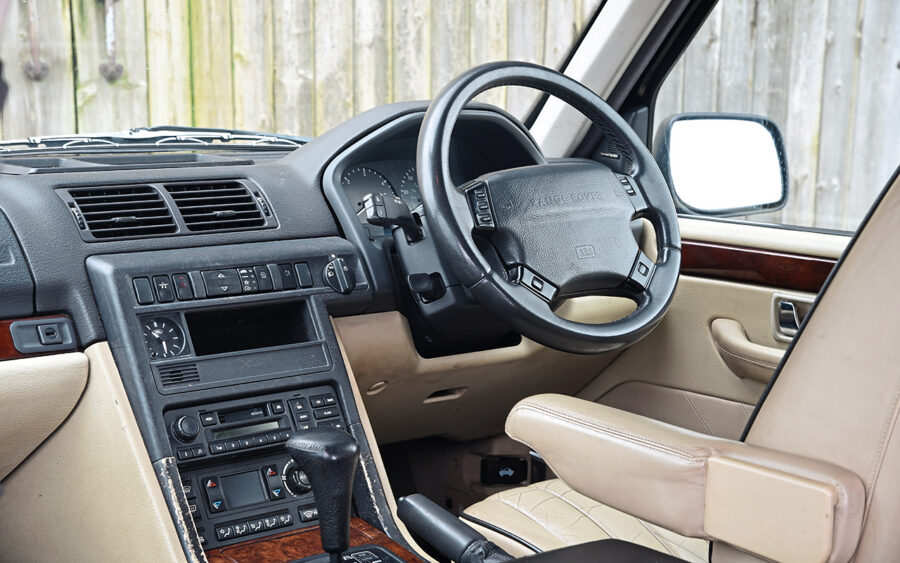
Neither is anything you wouldn’t have expected. It’s not a criticism of the Range Rover at all, but more an observation of how the car market began to evolve and shift towards a landscape where SUVs became more luxury objects than vehicles built for utilitarian purposes. Of course, the Range Rover can go places where other vehicles can’t. The Land Rover’s go-anywhere capability is a fundamental part of the brand’s DNA, as is luxury today.
This combination was first explored with the original Range Rover Vogue of the 80s, but further ratified by the P38A, which was luxurious from the outset. It’s from here that the company started building a car that was as much to take on the likes of the Jaguar XJ as it was to compete with its SUV rivals – something it did very well indeed, and which further enhanced its meteoric rise from farmer’s family car to celebrity status symbol.
As the P38A Range Rover went on to take sales from across the luxury car market, Ford’s decision to buy Land Rover in 2000, as part of the formation of the Premier Auto Group, probably did Jaguar a huge favour, because any sales impact didn’t take too much money out of its coffers.
By 2003, the Range Rover and the Jaguar XJ even shared powertrains – something that continues to this day – while the ever-blurring boundaries of the car market mean that Jaguar and Land Rover as JLR, a completely separate entity from their Ford days, sells cars that compete directly against each other in the market. In 1994, there was one Range Rover; today, there are four. In 1994, there were just two Jaguars (XJ and XJS) and today there are seven.
While these two cars may not seem the most obvious rivals, they were where this metamorphosis of the luxury car market began – both critical cars for the manufacturers at the time and luxury icons in their own right, but ones that would eventually come together to put the Jaguar and Land Rover brands at the very top of the luxury car market.
Of the two, the Jaguar is the traditional favourite and by far the better drive, but the Range Rover is more important in terms of how it transformed the car industry.

